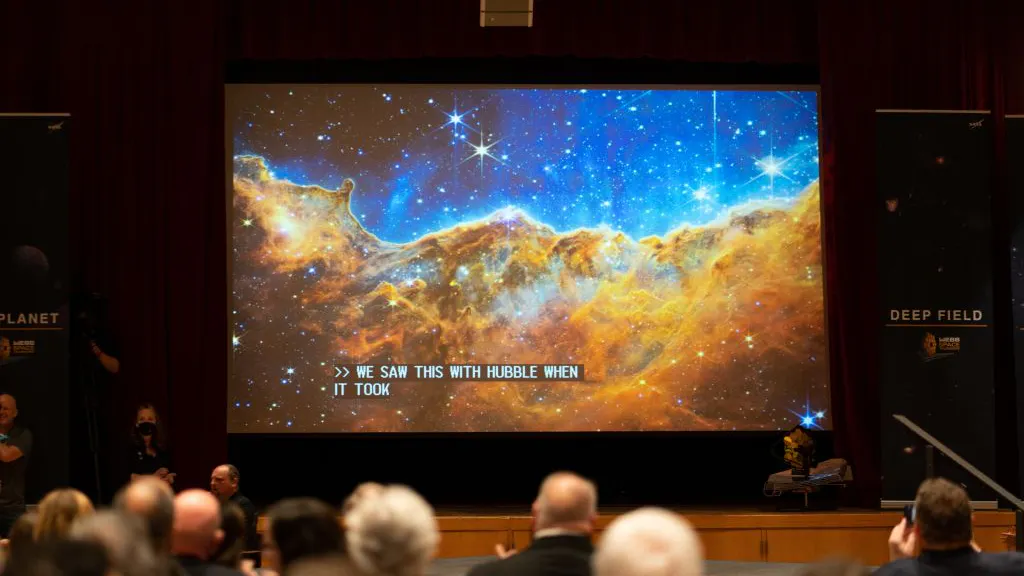A new era of discovering how stars are born is at hand, as NASA’s James Webb Telescope observed the Cosmic Cliffs, a star-forming region inside the NGC 3324 star cluster in the Carina Nebula, and found invisible areas of star birth that had never been seen before.
The Webb Telescope discovered behind heretofore impenetrable dust clouds energetic jets and outflows from young stars. The discovery might illuminate how radiation from nearby massive stars affects planets’ development.
“The two dozen previously unknown outflows from extremely young stars were found by analyzing data from a specific wavelength of infrared light (4.7 microns),” NASA reported. “Webb’s observations uncovered a gallery of objects ranging from small fountains to burbling behemoths that extend light-years from the forming stars.”
According to NASA, the initial formation of a star is a “relatively fleeting event – just a few thousand to 10,000 years amid a multi-million-year process of star formation,” but as Megan Reiter, the leader of the study enthused, the Webb Telescope captured a “snapshot in time,” adding, “It opens the door for what’s going to be possible in terms of looking at these populations of newborn stars in fairly typical environments of the universe that have been invisible up until the James Webb Space Telescope.”
“Jets like these are signposts for the most exciting part of the star formation process,” Nathan Smith, who authored the study, celebrated. “We only see them during a brief window of time when the protostar is actively accreting.”
Team member Jon Morse echoed, “It’s like finding buried treasure. … In the image first released in July, you see hints of this activity, but these jets are only visible when you embark on that deep dive – dissecting data from each of the different filters and analyzing each area alone.”
In October, the famed Pillars of Creation, columns deep in space made of gas and dust whose majestic images were first captured by the Hubble Space Telescope in 1985, got a stunning makeover in images the James Webb Space Telescope.
The images, far more detailed and conducted with Webb’s Near-Infrared camera, illuminated the luminous stars in the Eagle Nebula roughly 6,500 light-years from Earth.
“The Webb is designed to see infrared light, electromagnetic radiation with wavelengths longer than visible light — colors no human eye has ever seen,” The New York Times noted.
Webb’s view of the Pillars of Creation would let “researchers revamp their models of star formation by identifying far more precise counts of newly formed stars,” NASA cheered.
Newly-formed stars that look bright red rest near the Pillars; lava-like wavy lines at the edges of the Pillars result from stars within the Pillars ejecting matter. “The crimson glow comes from the energetic hydrogen molecules that result from jets and shocks. This is evident in the second and third pillars from the top,” NASA explained.

.png)
.png)

